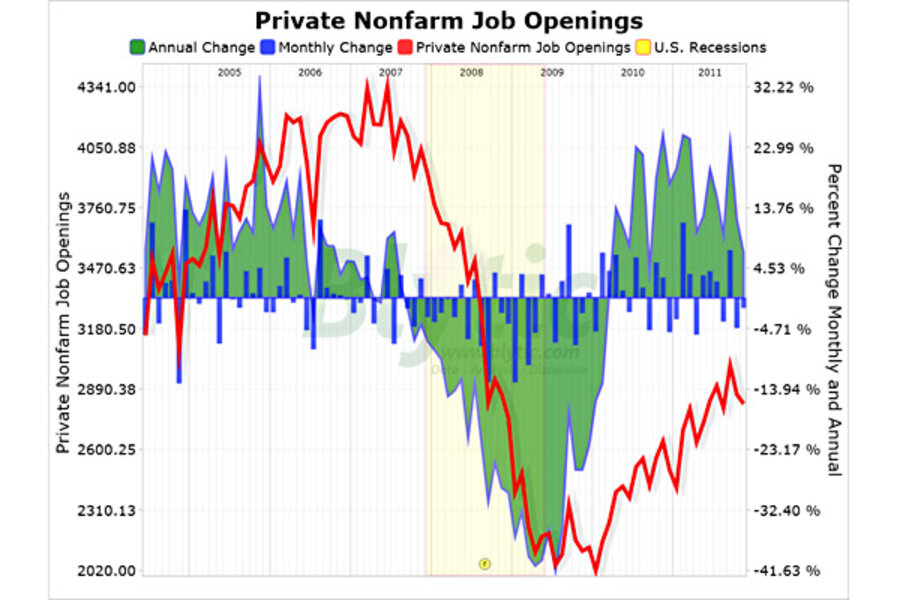New job openings decrease
Loading...
Today, the Bureau of Labor Statistics released their latest monthly read of job availability and labor turnover (JOLT) showing that private non-farm job “openings” declined 1.57% since October climbing 6.82% above the level seen in November 2010 while private non-farm job “hires” increased 2.11% from October and rose 5.37% above the level seen in November 2010.
Job “layoffs and discharges” increased 5.68% from October falling 1.19% below the level seen last year while quitting activity increased 1.83% from October remaining 11.37% above the level seen in November 2010.
It’s important to understand that job “quits” are included as a component of the “separations” data series as “quitting” is a valid means of workers “separating” from employers but their inclusion tends to create an overall procyclical trend in what would otherwise be logically thought of as a countercyclical process (i.e. downturn leads to increase in separations not decrease).





